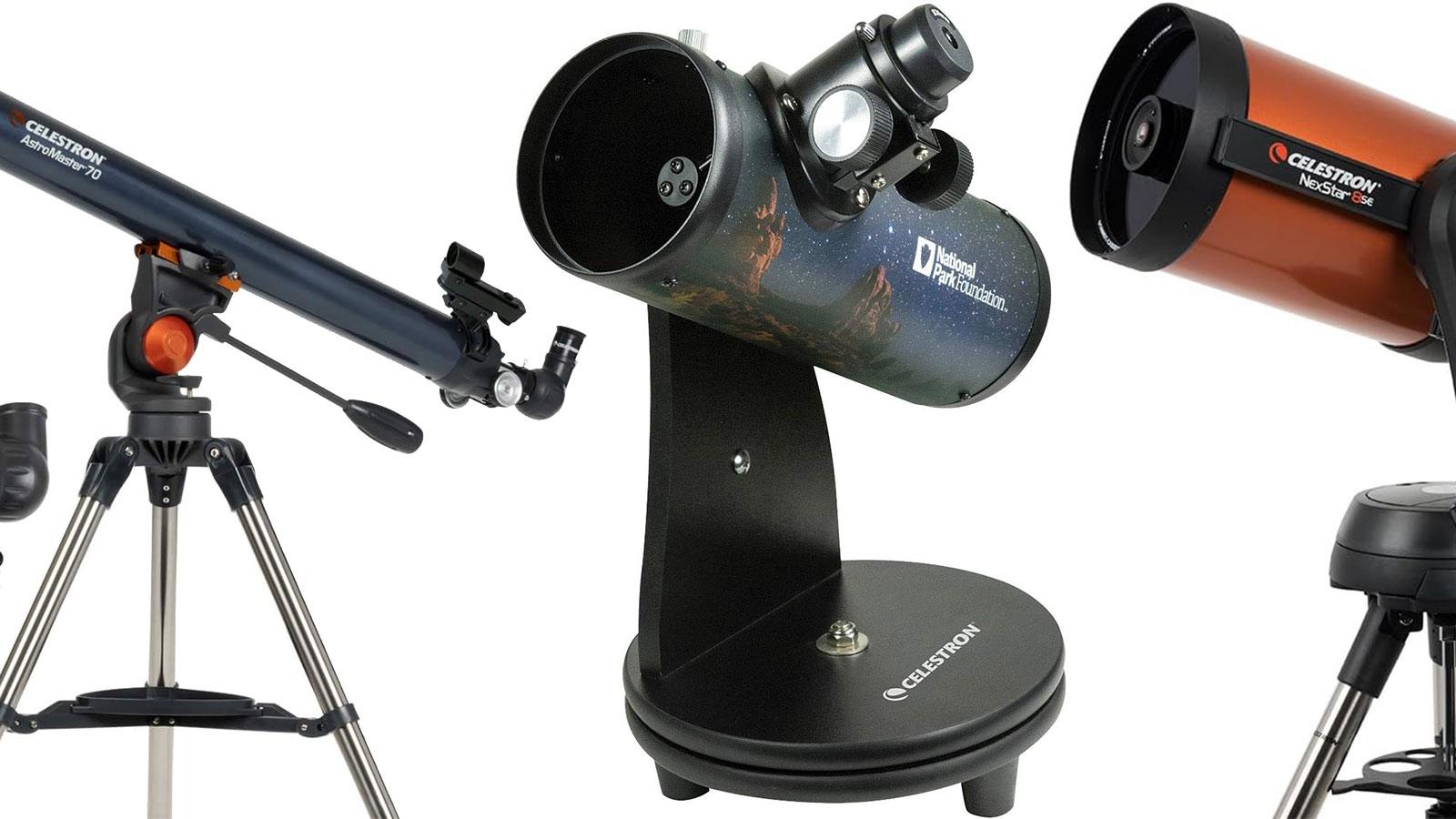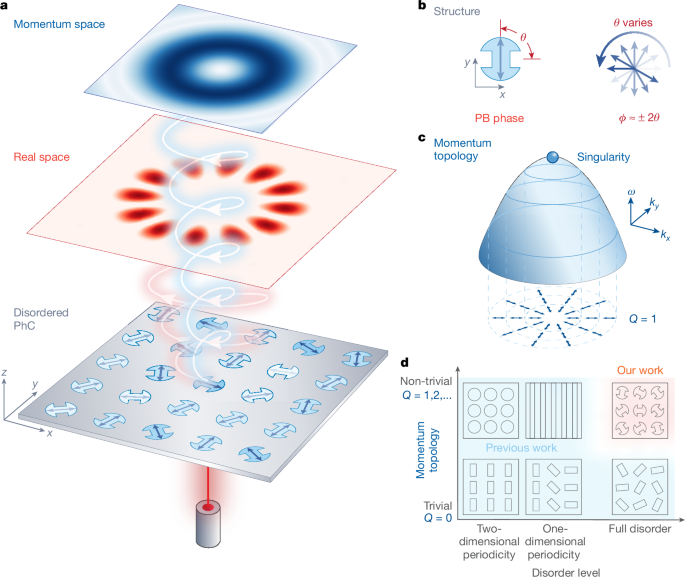www.popsci.com
While standard telescopes are certainly cool devices, there is no shame in preferring a telescope for beginners if youre just starting. Telescopes have multiple moving parts, finding celestial bodies is harder than it sounds, and some of the most advanced features can just get in the way if youre simply hoping for a better look at our galaxy from your patio, deck, or lawn. Here, we present the best telescopes for beginnerslike our best overall, the Celestron StarSense Explorer DX 130AZwith approachable terminology so you can get started easily.Best overall: Celestron StarSense Explorer DX 130AZBest for amateur astrophotography: Koolpte 90900mmBest for children: Celestron FirstScope (National Park Edition)Best splurge: Celestron NexStar 8SEBest budget: Celestron AstroMaster 70AZHow we chose the best telescopes for beginnersWhen we think about the best telescopes for beginners, we first and foremost think about approachable builds that have a lot of built-in stability for a good viewing experience. Then, there are certain kinds of beginners looking for telescopes that must be considered. For example, the parent wanting to share the universe with their child, the photographer who is tired of the terrestrial, and so on. As we prepared the best telescopes for beginners, we considered all these types of people.The best telescopes for beginners: Reviews & RecommendationsThe following telescopes were chosen for being good telescopes for the amateur and for their consistent quality. This means that youll see telescopes made for scanning the stars yourself, for being assisted by advanced tech, and even kid-friendly telescopes. You should also expect to see a lot of Celestron-branded telescopes; their products have been a favorite of ours for quite some time and are well-known for their quality builds and smart tech. (And they wont cost as much as, say, a Unistellar Odyssey Pro, which is amazing and highly automated, but at $3,999, it is far from what youd consider a good beginner pick.)Best overall: Celestron StarSense Explorer DX 130AZCelestron ProsProvides a completely guided experienceStarSense app uses guiding arrows to help you find objectsThe app also suggests easy-to-find objects each nightIncludes access to bonus educational softwareConsLarge sizeWhy it made the cut: This telescope allows you to work with your phone to find the most interesting sights of the night.SpecsMagnification: 26X to 65XOptical design: ReflectorSize: 30 x 32 x 50 inchesWhen you look up at the sky at night, you can see between dozens and hundreds of bright lights, which is the way our brain and eyes pair up to render the stars, planets, and other features of the night sky. Youd think zooming in on them would be easy, but it isnt. Celestrons StarSense Explorer DX 130AZ teams up with your smartphone to guide you not only toward the stars and planets but also to specific stars and planets.Using your phone, you can choose a target or pick from selected astral bodies that are visible from your location on the given night youre stargazing. Then, place the phone in the Celestron StarSense Explorer DX 130AZs holder. On-screen arrows will guide you in your targeting process; no complex astronomy terms or knowledge of constellations are required. In essence, this telescope acts like Google Maps driving directions for the stars.What might be intimidating about this telescope to the beginner is its large size. If youre not using it regularly, its a lot of scope to haul around or host in your home. Nearly all of the other telescopes on this list are going to be smaller, so if space (in a very local sense of the word) is an issue for you, there may be better options on this list.Best for amateur astrophotography: Koolpte 90900mmKoolpte ProsRemote picture-taking for stable shotsTake pictures directly to your phoneEasy fine-tuning optionsGreat collections of eyepieces and lensesSuitable for advanced users as wellConsStill requires manual aimWhy it made the cut: This Koolpte telescope allows phone mounting and remote picture-taking for stable shots.SpecsMagnification: 45X to 450XOptical design: RefractorSize: 16.7 x 39.7 x 8.7 inchesThe Koolpte 90900mm is made with picture-taking in mind, but we also think that youll get the best value out of this scope as it is designed to ease you into more advanced shots from a solid beginning. The scope comes with a variety of lenses and eyepieces, ultimately giving you the ability to get a large magnification level (an advanced users dream) when youre ready for it.While you shouldnt expect a photo to rival these James Webb telescope images, you can certainly get a shot worthy of your personal collection on it due to the ability to take photos via a remote button pressyou wont accidentally jiggle the telescope lens light years off track when you tap the take photo button. Advanced fine-tuning features that let you alter the Koolpte 90900mms aim by a single degree at a time will also allow you to frame a shot exactly as you wish.Best for kids: Celestron FirstScope (National Park Edition)Celestron ProsSmall size, highly portableLow costCute National Park designGreat as a bookshelf decoration when not in useConsDifficult to use while standingWhy it made the cut: This telescope is made with young users in mind, making it easy for them (and their parents) to hop in quickly.SpecsMagnification: 30XOptical design: NewtonianSize: 13 x 8 x 8 inchesWhile telescopes for kids might seem simple and ready for beginners by design, some are better than others in this regard. The Celestron FirstScope series of scopes is definitely that way. They require essentially no setup, have a sturdy base as opposed to a typical tripod design (though this makes them shorter, and you might need to sit to use it), and let you get right to the fun. Coincidentally, this is also great for adults, too, and as a result this is the best telescope for beginners to share with their eager kids.A telescope typically isnt something youd consider sending with your child to a friends house. However, the National Park FirstScope from Celestron weighs under 5 pounds, is only 13 inches at its widest, and costs under $100. That makes for easy movability and lowered fear about damaging a priceless object while out and about. Still, younger children should have some parental guidance, especially when it comes to what time to use the scope and safe usage of it.Best splurge: Celestron NexStar 8SECelestron ProsMotorized GoTo Mount finds over 40,000 celestial objects for youDisassembles into many piecesHighly portableAbility to attach DSLR camera for photographyConsExpensiveWhy it made the cut: The Celestron NexStar 8SE finds things in the sky for you.SpecsMagnification: 29X to 480XOptical design: CatadioptricSize: 32 x 34 x 52 inchesCelestrons NexStar 8SE uses smart technology to find out where you are, whats available to see, and position itself accordingly. You line up any three bright objects in the sky, let the telescope do its calculations, and then simply use the motor control to select what you want to look at. Then, the motors of the telescope move into position for you. In many ways, this is largely a skill-free high-powered telescope.If you travel or vacation often and want to see what you can see with less light pollution or the rapidly growing skyglow, youll be delighted to know that the telescope breaks down into seven component parts, making for compact traveling. While discussing components, know that the included StarSense AutoAlign and Wi-Fi modules that are included in this kit are compatible with other Celestron packages and that you can attach a DSLR camera to its base for a unique picture-taking opportunity.Admittedly, this telescope is on the expensive side at $1,599. Its ideal if youre looking to jump into the deep end quickly and have no patience for fiddling around, however.Best budget: Celestron AstroMaster 70AZCelestron ProsGreat affordabilitySimple, classic designFast setupConsPrecision focus can be difficultWhy it made the cut: This budget telescope has everything you need to really get started.SpecsMagnification: 10X to 165XOptical design: RefractorSize: 27 x 32 x 51 inchesWhen we look at budget telescopes, the classic design and build of the Celestron AstroMaster 70AZ make it a quick favorite. It will look and feel like what youre thinking of when you think of a simple telescope, making it feel familiar right away, even if you dont have much or any experience with telescopes.This is a do-it-by-hand sort of machine and all of the smarts are going to have to come from you. But, with its affordable price and simple mechanisms, youre likely to be very happy with it. Its a lightweight machine and doesnt have pro-tier fine-tuning, which can make it somewhat fidgety when youre aiming for precision focus, but getting a good peek in is highly possible. Overall, this is a great starter telescope.What to consider before buying telescopes for beginnersWhere do you even begin when looking for a telescope that will treat beginners right? If your first instinct is to think of the magnification, you arent alone, but that isnt the only factor and (as youll see) can be misleading when looking for a telescope that you can easily use right out of the box. Here are the most common things to think about from a beginners perspective when buying your first telescope, as well as the generally accepted recommendations for what to get.MagnificationMagnification is one of the hardest aspects of telescope usage for beginners to wrap their minds around. As one beginner has thoughtfully posted online, most beginners want max magnification. The problem? It isnt always useful, can increase blurriness if all other parts of the telescope arent up to par, and makes stability (which can already be difficult for the beginner to manage) even more important than it already is. Instead, a magnification between 50X and 200X is probably more manageable for the beginner.To keep things simple, the above telescopes were chosen for their complete package so the beginner can expect to have a good shot right away. While magnification is important, and beginners care about it enough to make it worthy of mention, it isnt necessarily the defining trait of the best telescopes for beginners that you might think it is.Optical designThere are many types of telescopes out there, often with naming conventions that invoke history textbooks and historical figures like Newton and Dobson. While it is important to figure out what sort of telescope you want, it is equally important not to get overwhelmed with a preliminary choice. Heres a primer on the telescope optical design types:Reflector: These telescopes use mirrors to reflect light into focus and are, therefore, shorter and often cheaper to make. When we looked at telescopes under $500, we interviewed Dr. Jason Aufdenberg, Associate Professor of Astronomy and Astrophysics at Embry-Riddle Aeronautical University, who suggested that Dobsonian reflectors are the best telescopes for beginners due to their high light collection.Refractor: These telescopes are longer and thinner, using lenses to peer straight at a target. They provide high stability but are typically somewhat expensive.Catadioptric: These telescopes use mirrors and lenses together to create a compact, portable telescope.Mounting, setup, and stabilityWhile more complex telescopes will have similarly more complex mounting types, as a beginner, the best telescopes for you will likely not be too complex in this regard.In most instances, youll get a telescope that fits on a standard tripod, which will almost certainly come with your scope. Based on your needs or desires, you may wish to ask yourself some of the following questions to determine if a given telescope for beginners truly fits your needs:Is it possible/easy to detach the scope from the mount?What extra stability features does the mount have?Does the mount have full tilt and swivel control?Is the movement on the mount fully manual, or are there fine-controlled electronic options?Ultimately, the most important thing for your telescope mount will be the stability it provides. A wiggly, jiggly telescope is almost never going to be the best telescope for a beginner to dig into the hobby with. And a handheld telescope would likely be a disaster. Much like a distracted driver reading a text and migrating into another lane due to a small deviation in the cars direction, even small movements will provide completely different viewpoints in the distance from Earth to our moon and beyond.As a result, look for mid-bars (aka spreaders) that increase the strength of a tripods legs by connecting them in the midpoint between the feet and the mounting area. Additionally, heavier telescopes might be better for you as a beginner, even if the idea of a heavy telescope might initially feel intimidatingthe extra weight will hold the telescope more firmly to the ground, increasing stability naturally.Finally, some telescopes have motorized controls, which make for smooth transitions and can even be programmed to target specific celestial bodies. This makes it easy for people, even beginners, to find what they want.Price rangeAs previously alluded to, weve collected tons of telescopes under $500, so highly affordable telescopes are available. And, if you just want to explore the hobby, see a few sights, and possibly just have a conversation piece in your room that you pull out from time to time, this is a great place to start.But, like many hobbies, there are affordable places to start that can let you try out decent equipment so you can jump in with a more expensive (but still appropriate for beginners) product once youve gained your footing. We highly recommend looking in your area for one of the many library telescope programs that are popping up nationwide to give you extra perspective while in this beginners stage.Remember that if youre dedicated to the hobby, theres nothing wrong with paying a bit more for your first telescope, especially if it gives you access to beginner-friendly features that make your experience less frustrating.SizeA final, often overlooked factor that beginners should consider is the size of the telescope. Beginners getting their first telescope can consider this problem from several angles.First, consider a full-scale telescope on a tripod. If you use it often, this large size really wont need to be considered as much in the same way that we dont concern ourselves with the space taken up by a washer or dryer. Some things are just the size that they are. Plus, a larger telescope will make for a more comfortable viewing posture while standing.But what if you arent going to be using the telescope regularly? Theres always this risk with a beginner hobby, as were feeling things out and learning if we want to make them a regular practice or not. If the space taken up by the extended telescope and mount isnt too large for your space, they can make for an excellent display piece, and the conversations that your telescope will facilitate just might spark you into action, bringing out the telescope again with a buddy.Try to balance the space of your home and the telescope, or plan to put it away and store it somewhere. If you plan on putting it away and taking it back out regularly, it is essential that the mount is easy to put away and extend and that lens covers are sturdy and easily usable.FAQsQ: How much does a telescope for beginners cost? A telescope for beginners can cost anywhere from $100 to $1,000 or more. It all depends on what kind of beginner you are. If you want something cheap to embark on the hobby with, you can find it. However, if you want something that will automatically find objects for you and act as an on-demand expert guide, you can expect to pay more. Q: Are telescopes easy to maintain and service? Yes, telescopes are typically pretty easy to maintain and service if youre careful with them and dont drop them or scratch up the lenses. Most joints and moving parts are away from the precious lenses, meaning it is relatively easy to service them on your own. While lenses may be more tricky or expensive to maintain, the use of covers and proper procedures can act as preventative service. Q: What types of beginner telescopes are there? Beginner telescopes run the full gamut, from fun telescopes with learning software that are meant for students to motorized telescopes with automatic celestial body-finding capabilities. Final thoughts on the best telescopes for beginnersBest overall: Celestron StarSense Explorer DX 130AZBest for amateur astrophotography: Koolpte 90900mmBest for children: Celestron FirstScope (National Park Edition)Best splurge: Celestron NexStar 8SEBest budget: Celestron AstroMaster 70AZThe preceding list of telescopes will help you see the night sky and even some of the older stars in the universe on a more personal level, even as a beginner. Take your time, find a stable place to set up your scope, and get started. Using one of the best telescopes for beginners is a great way to elevate your armchair astronomy to the next level.











